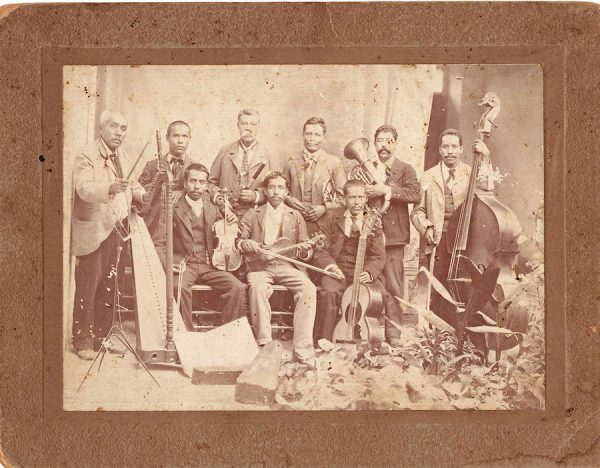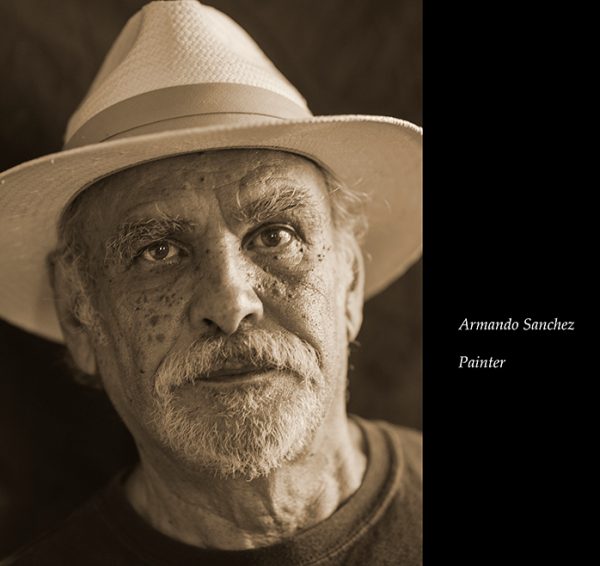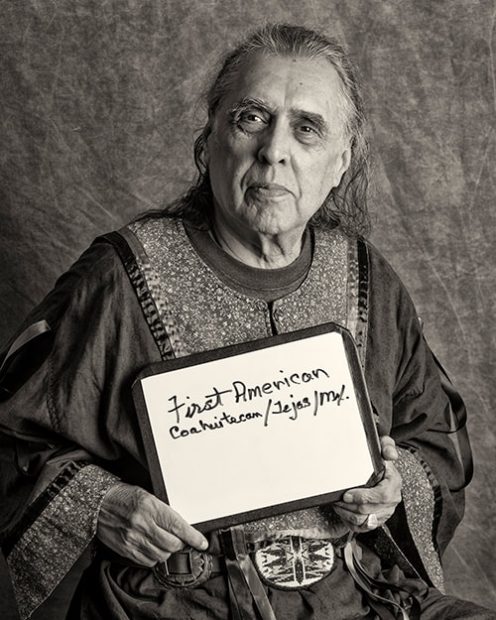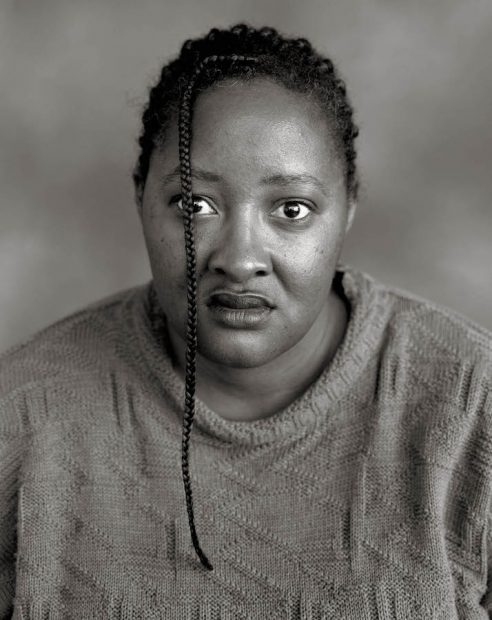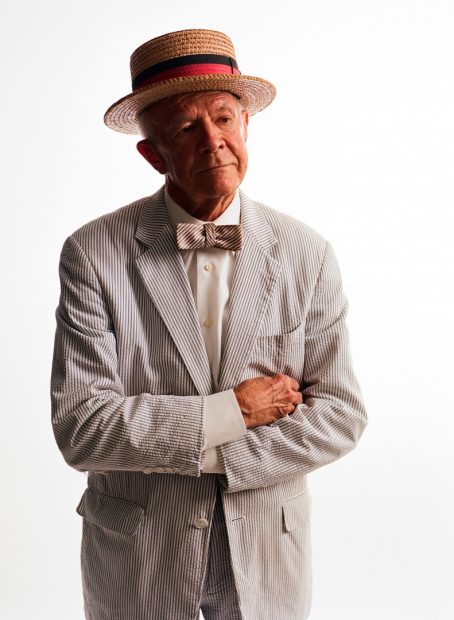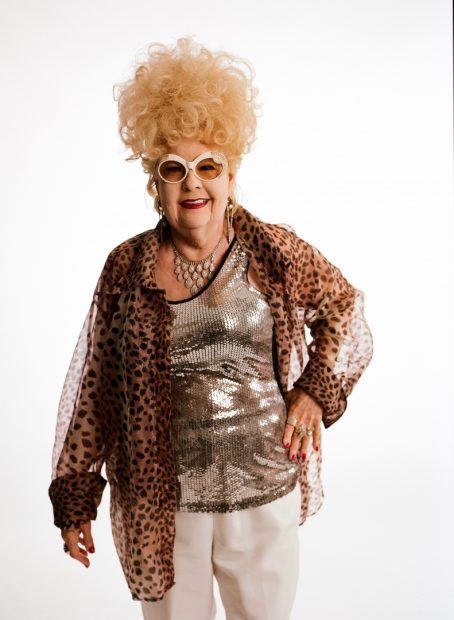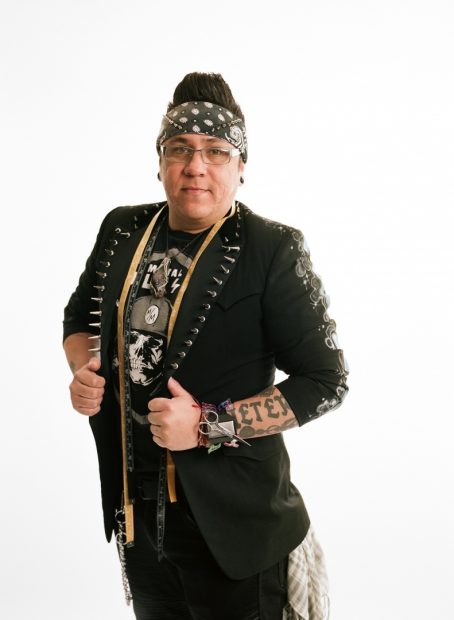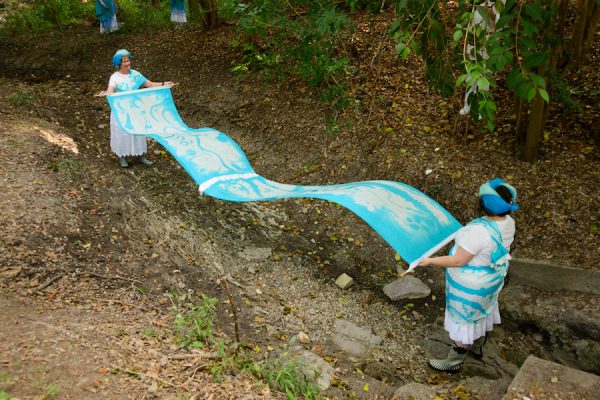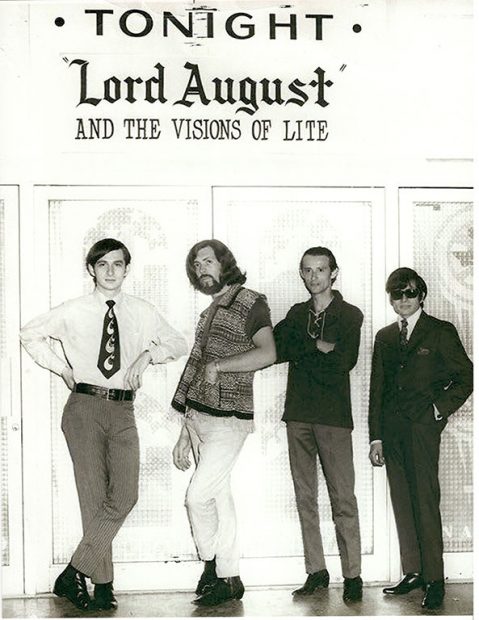I already spend way too much time cooped up at home either staring at this screen or staring into space. Nonetheless, the current pandemic has indeed managed to give me extra time to meander through distant realms of online possibility. Some of the most interesting content I’ve been bingeing on is the e-magazine, Hidden Histories. Produced in San Antonio by URBAN-15, the program loops in a wide range of contemporary and vintage arts, social issues, and stories from the Alamo City’s mysterious past.
A recent episode, Photography, Player Pianos, and Paleohistory, features interviews with San Antonio photographers Ramin Samandari and Michael Nye. Samandari’s 2015 exhibition, San Antonio Faces of Art, at the city’s Department of Culture and Creative Development, presented 268 portraits of artists, curators, writers, arts administrators, collectors, and gallerists. The 300 images in Huddled Masses, Who We Are, his current — and now permanent — exhibition at the Institute of Texan Cultures explore “the story of mankind on the move,” as Samandari explained to URBAN-15 host George Cisneros.
A native of Iran, Samandari immigrated to Texas during the Iranian Revolution of 1979 and became an American citizen in 1990. The Huddled Masses project, which depicts San Antonians holding a white board on which they have written a comment about their ancestry or ethnicity, was inspired by the 2016 presidential election. “The idea of nationhood is still a new concept in the history of humankind,” the photographer told Cisneros. “Interestingly, the viewer’s eye goes right to the white board. People are more fascinated with what the subjects wrote than with their portraits.” You can view a slide show of the exhibition on Samandari’s website.
“To me, photography is about inquiry,” says Michael Nye. “It’s always ambiguous, susceptible to multiple meanings. An image is always more than or less than what’s there. The medium has that mystery. And unlike any other artform, it’s instantaneous, but it’s conveying something that’s more eternal. It’s not necessarily about truth for me, though you want to have a fidelity to the experience. It’s more about presence.” Nye, who produces silver prints with an 8×10 view camera and a wet darkroom, has explored such human stories as teen parenthood, mental illness, and blindness with his social action photography. All may be experienced on his website, and his exhibition My Heart Is Not Blind was installed at Panhandle-Plains Historical Museum in Canyon through May 2 (though one suspects that many shows will be extended after museums reopen).
Hidden Histories debuted in 2018 in conjunction with San Antonio’s 300th birthday celebration, or as George Cisneros puts it, “the most recent 300 of our 10,000 year history.” (I.e., human habitation in the San Antonio area goes back some 10,000 years.) The December 2018 episode covers another interesting photography project, Uniform 300, which SA photographer Rahm Carrington created with his mom, curator Alice Foultz. Capturing San Antonians in their professional armor, Uniform 300 documents what people wear at work and examined the ways in which such ensembles both define and don’t define the individual. Along with such SA notables as the Mayor of Southtown, Mike Casey, and Cord Maldonado, aka Spurs Jesus, the project included a wealth of occupations: tattoo artist, OBGYN, archeologist, poet/juvenile detention officer, flamenco dancer, retired secretary/gambler, chef, rapper, sommelier, fast food workers, pastor, rodeo clown, TV host, engineer, Schilo’s Centennial Ambassador, and a fashion designer named Golden Skyy.
The Director of Ectotherms from the San Antonio Zoo was photographed with a serpent for Uniform 300, and the Smoke Shack butcher held a pig’s head. Abe Cortez of the 103 year-old Paris Hatters on Broadway posed with a Stetson, and the Institute of Texan Cultures/UTSA Libraries Special Collections photography curator Tom Shelton sported cotton gloves as he displayed one of the collections’ millions of rare images. In the November 2018 episode, Chad Dawkins, director of exhibitions at SA’s Southwest School of Art, discusses another Tricentennial project, Common Currents, a six-venue rolling exhibition in which hundreds of artists each addressed a single year in San Antonio history. In the same episode, Ray Hernandez, former SA police officer and co-founder of American Indians in Texas at the Spanish Colonial Missions, talked about the Coahuiltecan people in the San Antonio area, and artist and Vietnam veteran Roberto Sifuentes spoke of the cathartic power of art in healing trauma.
Two of my favorite episodes also debuted in the first season. In the June 2018 program, El Ojo del Agua: Sacred Springs, Sacred Stories, Sister Martha Ann Kirk of the University of the Incarnate Word, and Isaac Alvarez Cardenas, prayer leader for the Tap-Pilam Coahuiltecan Nation, discuss the importance of the Blue Hole, the spring that historically gave rise (and sometimes still does) to the San Antonio River. Among other stories and factoids about the healing and spiritual powers of the bubbly stuff, Kirk mentions that before development siphoned off so much of the aquifer, the Blue Hole spurted from the earth with a 20-foot geyser. Cardenas adds that one of San Antonio’s earliest names, Yanaguana, means Land of Spirit Waters.
All that enchanted wetness makes sense for a town named for St. Anthony. As Cardenas points out in the interview, when St. Anthony (1195-1231) was exhumed in 1261, his tongue is said to have still been moist and glistening, in contrast to the remainder of his decomposed body. The tongue is thus displayed in a gold reliquary in the Basilica of St. Anthony of Padua.
In my other favorite episode, January 2018’s Cenobio Hernandez, Westside Composer, Hernandez’ grandson Ricky Hernandez tells the story of his ancestors coming to San Antonio from Mexico during the Mexican Revolution, as did so many South Texans. A native of San Luis Potosi who played the cello, bajo sexto, and bass, Cenobio Hernandez (pictured with his orchestra at the top of this page) had been a successful musician in Mexico before a touring member of the San Antonio Symphony convinced him to come to the Alamo City. Arriving in 1922, Hernandez formed his own orchestra and forged a lucrative career playing for silent movies on the west side of town. With the advent of talkies, Cenobio had to go to work in the fields, harvesting crops. “It humbled him,” says his grandson, “but he would play music at night, and the people who hired my grandfather loved him.”
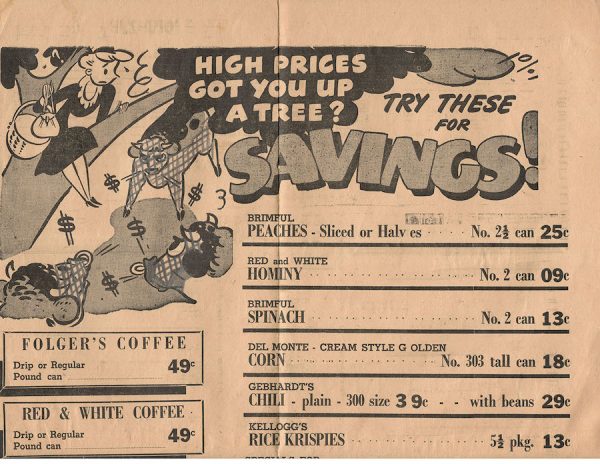
Cenobio Hernandez would compose music on his shirt sleeve or anything else that was handy. This is a Handy Andy grocery bag that served as the backside of one of his compositions.
Ricky Hernandez found a box of Cenobio’s music manuscripts — polkas, waltzes, concertos — in his grandmother’s closet and has produced a CD of his grandfather’s music. As shown in Hidden Histories, some of the compositions were even written on Handy Andy grocery bags. Ricky plays a few selections of the music on piano in the program, and at the end, he is joined by his brother, Bubba Hernandez, who sings one of Cenobio’s tunes. A member of the “nuclear polka” band Brave Combo for 20 years, Bubba Hernandez has, in my mind, the best Texas name ever.
Other episodes have addressed artists’ day jobs, gentrification and neighborhood displacement, the Alamo in cinema, long gone music venues of San Antonio, the origins of the Southside Sound, Hemisfair 1968, Fiesta Noche del Rio, UFOs in South Texas, SA native/MTV star Michael Morales, histories of educational inclusion, Mexican sweet bread, and environmental resistance in South Texas. Each April episode is Mega Corazon, a spoken word marathon of San Antonio’s performance poets. “Pandemic-proof and NOT CANCELED,” the youth-oriented segment of the event streamed live in April, and the archive is now available here. As Isaac Alvarez Cardenas says, “Everybody in San Antonio has a pretty good tongue.”
****
Personal note: In 1974, I participated in URBAN-15’s initial public performance, Six Point Gestures, which took place at a UT baseball field (now the site of the UT Art Library and Bass Concert Hall). I didn’t see George and his wife Catherine Cisneros, artistic director of URBAN-15 from the ‘70s until 2017, when I interviewed them at their San Antonio artspace, in a 1930s former church, for this article.


